Anti-Zeppelin gun fired in Dover Castle display
- Published
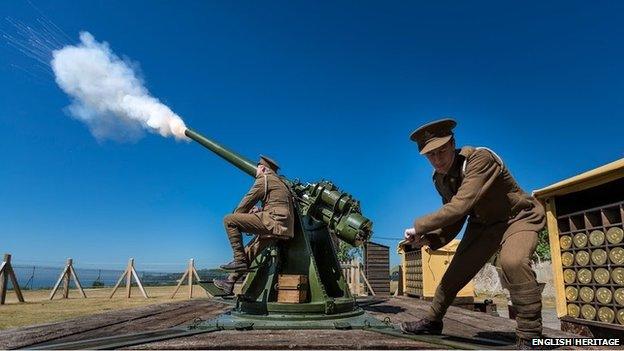
The anti-aircraft gun is the only working example of its kind, English Heritage says
A World War One anti-aircraft gun has been fired in Dover to mark 100 years since guns were used to repel German Zeppelin raids over the White Cliffs.
The gun, built in 1915, has undergone months of restoration and is the only surviving example of its kind, English Heritage said.
It has been installed in Dover Castle and was fired earlier.
It is part of the recreation of one of the anti-aircraft gun placements at the castle, first put in position in 1915.
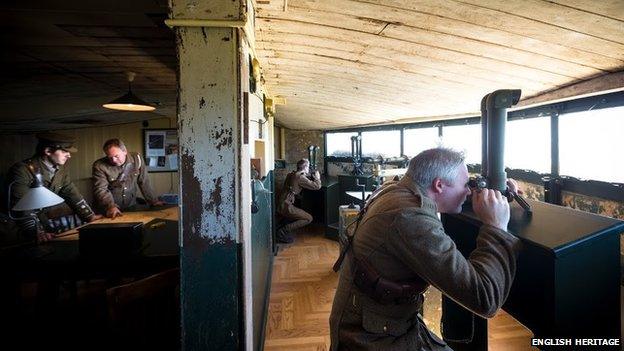
The fire command post at Dover Castle has been restored by English Heritage
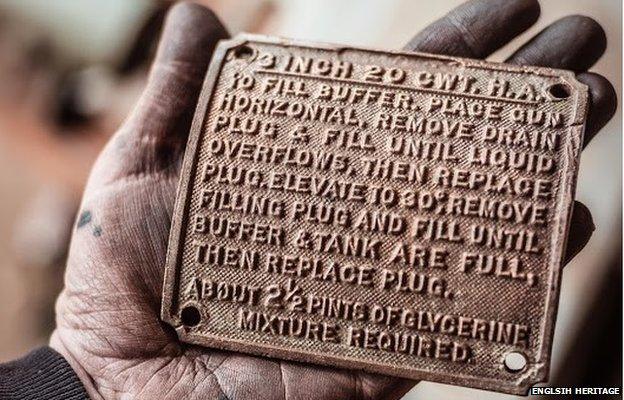
The gun needed filling until it "overflowed" with glycerine
The gun, acquired from the Ministry of Defence in 1994, will be fired on 1 and 2 August by specially trained volunteers in authentic costumes, an English Heritage spokesman said.
Dover was the target of the first recorded bombing raid by a German aeroplane on Great Britain in December 1914, he said.
Paul Pattison, an English Heritage historian, said the Straits of Dover were "the most dangerous water in the world during the First World War".
"Dover Castle was critically important to the defence of Britain during the First World War, standing guard above the English Channel and helping to defend the nation from the new threat of aerial warfare," Mr Pattison said.
The gun is being fired as part of the £490,000 Dover at War project, partly funded by a £272,000 Heritage Lottery Fund grant.

The Dover at War project has been partly funded by the Heritage Lottery Funding
- Published20 July 2015
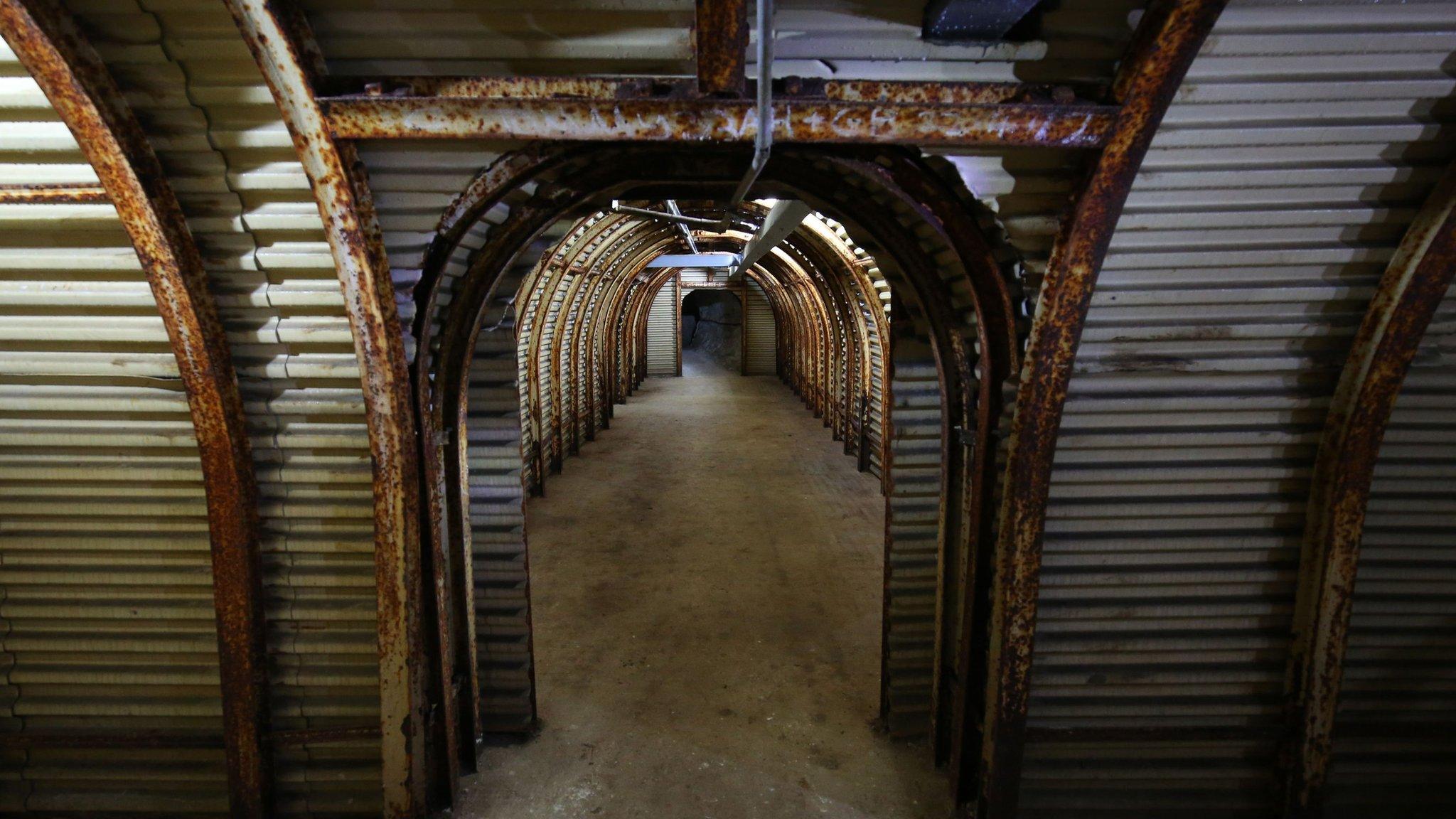
- Published10 September 2013
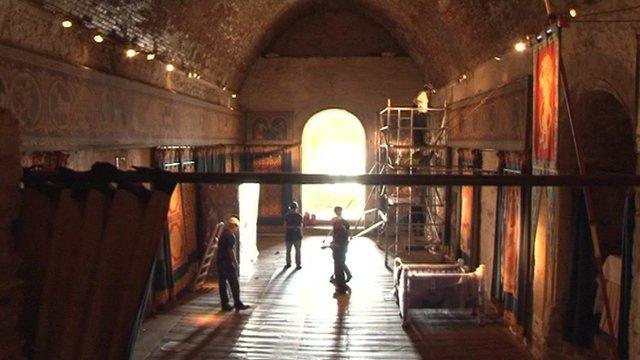
- Published16 October 2012
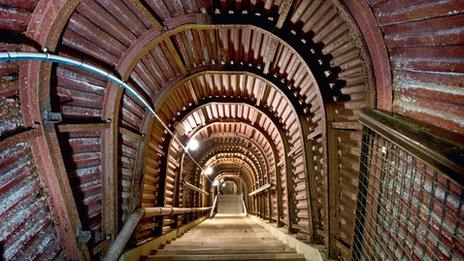
- Published7 June 2011